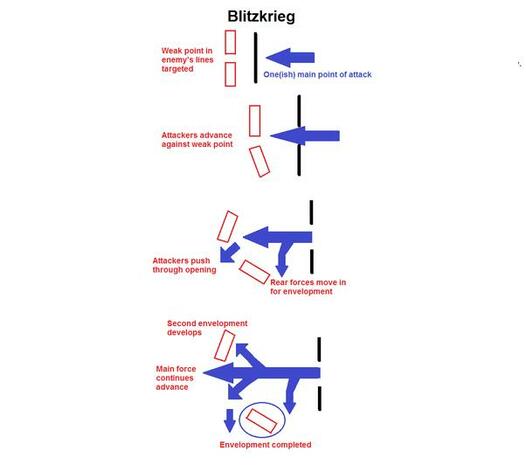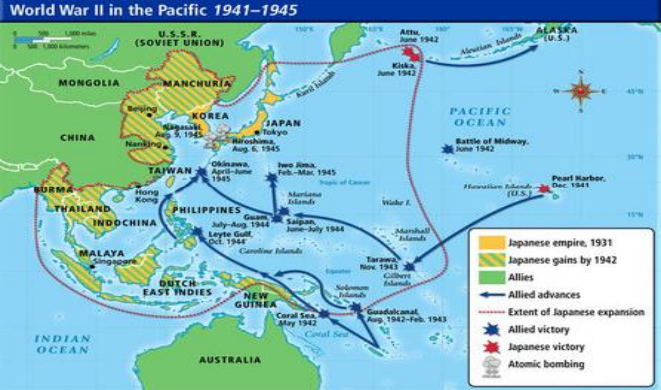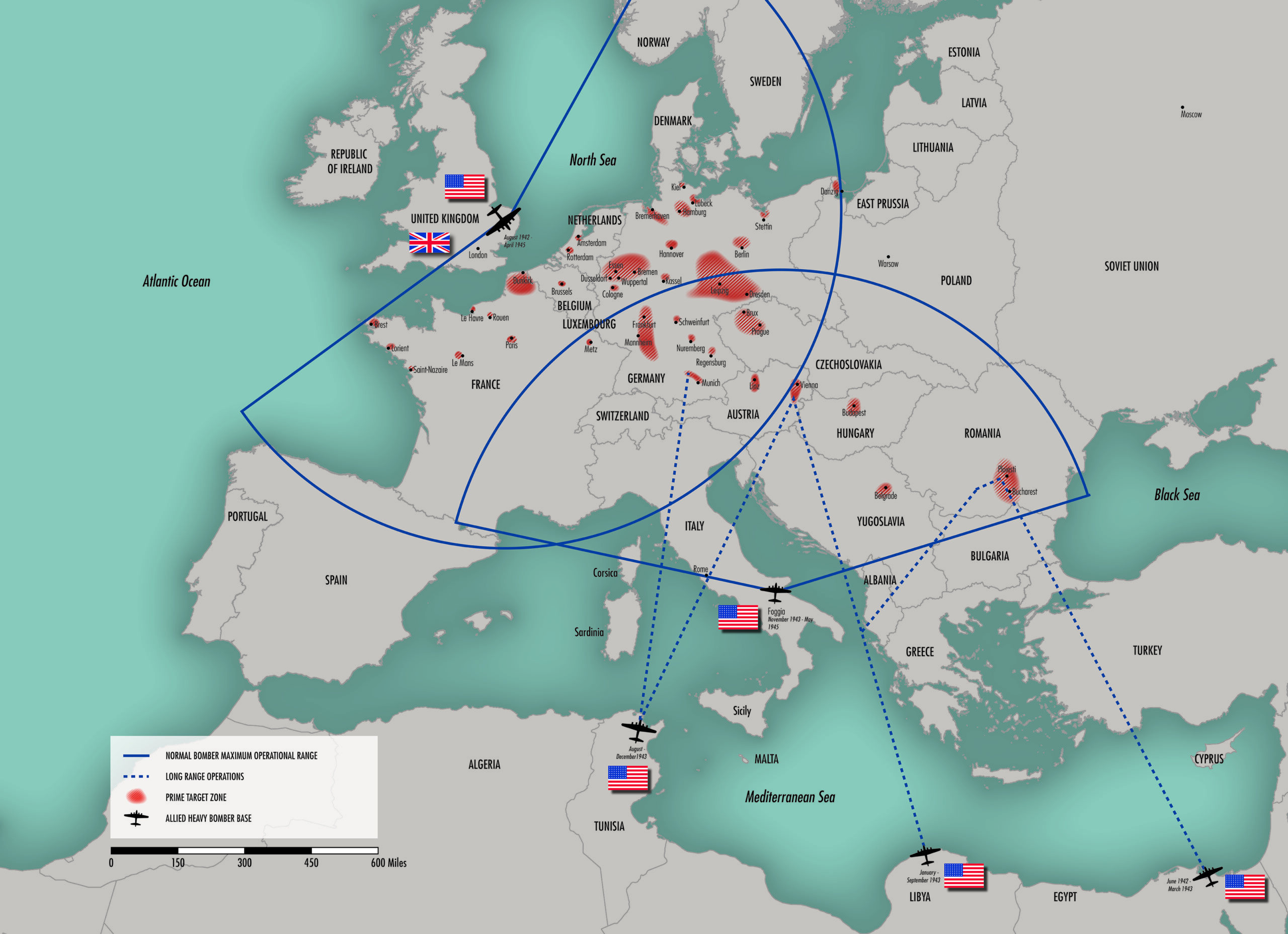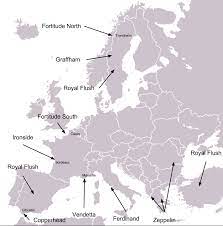Welcome, history enthusiasts, to a journey through the annals of World War II, where pivotal military strategies reshaped the course of global conflict. 🌍 In this article, we’ll delve into the ingenious tactics and maneuvers employed by nations embroiled in the deadliest war humanity has ever witnessed. From blitzkrieg assaults to island-hopping campaigns, each strategy was a chess move in the grand theater of war, influencing the outcome and leaving an indelible mark on history. So, let’s embark on this captivating exploration of military brilliance! 💥

Source- Pacific Atrocities Education
Blitzkrieg: Lightning Warfare ⚡
“The victor will never be asked if he told the truth.” – Adolf Hitler
The term “Blitzkrieg” conjures images of swift, overwhelming assaults characterized by coordination, speed, and surprise. Originating from German military doctrine, Blitzkrieg revolutionized warfare, epitomizing the marriage of mechanized infantry, air power, and tactical innovation. 🚀
With Poland as its first victim in 1939, Germany unleashed Blitzkrieg with devastating effect, swiftly overwhelming enemy defenses and sowing chaos behind enemy lines. The Fall of France in 1940 showcased Blitzkrieg’s efficacy as German forces pierced deep into enemy territory, bypassing fortified positions and encircling opposing armies. 🇩🇪
General Heinz Guderian, the architect of Blitzkrieg, emphasized the importance of speed and flexibility, advocating for decentralized command and mobile warfare. His doctrine laid the groundwork for future military operations and influenced strategies beyond the confines of World War II.

Source- MacArthur Memorial
Island-Hopping: Pacific Theater 🏝️
“In war, truth is the first casualty.” – Aeschylus
As the Pacific Theater became a battleground of island strongholds, Allied forces devised a strategic approach known as “Island-Hopping.” 🌊 This method, employed primarily by the United States, aimed to bypass heavily fortified Japanese positions while establishing strategic bases for further advancement towards Japan.
Beginning with the Battle of Guadalcanal in 1942, Allied forces seized key islands, gradually tightening the noose around Japanese-held territory. Admiral Chester W. Nimitz and General Douglas MacArthur orchestrated this campaign, meticulously selecting targets to minimize casualties and maximize strategic gains. 🗺️
Island-Hopping required immense logistical support and amphibious expertise, as troops faced hostile terrain, determined resistance, and the unforgiving Pacific environment. Yet, through perseverance and coordinated efforts, Allied forces steadily advanced towards the Japanese mainland, inching closer to ultimate victory.

Source- World War 2 Classrooms Organization
Strategic Bombing: The Air War 🛩️
“Never in the field of human conflict was so much owed by so many to so few.” – Winston Churchill
The skies became a theater of war as both Axis and Allied powers unleashed devastating aerial bombardments on enemy targets. Strategic bombing, aimed at crippling enemy infrastructure and morale, played a crucial role in shaping the course of World War II. 💣
For the Allies, the bombing campaign against Axis cities, exemplified by the firebombing of Dresden and the atomic bombings of Hiroshima and Nagasaki, sought to break enemy will and hasten surrender. In contrast, Axis powers, led by Germany’s Luftwaffe, targeted strategic targets such as factories, airfields, and ports in a bid to cripple Allied war efforts.
Strategic bombing, however, carried immense human costs, with civilian populations often bearing the brunt of aerial assaults. The moral and ethical implications of targeting civilian centers remain subjects of debate to this day, underscoring the complex nature of modern warfare.
The Art of Deception: Misdirection and Disinformation 🎭
“In wartime, truth is so precious that she should always be attended by a bodyguard of lies.” – Winston Churchill
In the realm of warfare, deception emerges as a potent weapon, capable of misleading enemies and shaping perceptions on the battlefield. 🕵️♂️ Throughout World War II, both Allied and Axis powers engaged in elaborate schemes of misdirection and disinformation to gain tactical advantages and confound their adversaries.

Source- Wikipedia
Operation Fortitude, a prime example of Allied deception, involved the creation of fictitious army units and the dissemination of false intelligence to deceive German forces regarding the location and timing of the D-Day invasion. 🏴
Similarly, the Axis employed deceptive tactics, such as the use of double agents and encrypted communications, to mislead Allied forces and maintain the element of surprise. The Battle of Midway stands as a testament to the power of deception, as the United States deciphered Japanese naval codes, allowing American forces to ambush and decisively defeat the Imperial Japanese Navy.
As we conclude our exploration of World War II’s military strategies, we’re reminded of the enduring legacy left by the architects of warfare. From Blitzkrieg’s lightning assaults to the intricate web of deception woven by both sides, each strategy shaped the conflict’s outcome and left an indelible mark on history. 🏛️
As we reflect on the lessons of the past, let us strive for a future where diplomacy triumphs over conflict, and where the art of war yields to the art of peace. 🕊️ Let us honor the sacrifices of those who fought and perished in the crucible of war by cherishing the fragile gift of peace that they fought to preserve. 🌟
So, until we meet again to unravel the mysteries of history, remember: the echoes of the past resonate in the present, guiding us towards a future forged in the crucible of human experience.

Leave a Reply